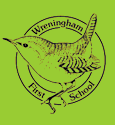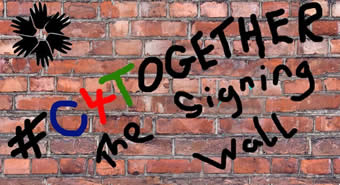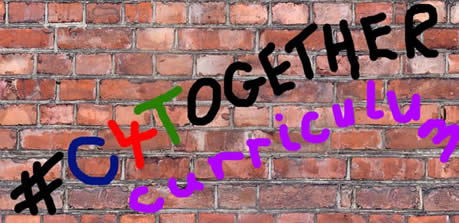
REMEMBER, to work from the back of your book unless you are instructed not to below (our project work will work from the front without other work inbetween).
This Term's Theme is;

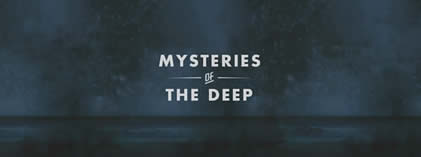
This Weeks Activities:
Instructions are in RED
Activities for Week Beginning 18th May
Friday 22nd May
Friday Signing:
We've got another lesson from Tyrese to finish this Summer Hlaf-term off today. Hope you are keeping up and your skills are improving.
Click on the sign wall below and you'll Tyrese will take you through the next session.
Thursday 21st May:
Science:
The Science of Water
After this week's fantastic water droplet art, I decide to move away from our 'evolution' studies and let us explore the science of water. Why do the drops in our art work stay together in their beautiful globules; what is holding them together, why does water soak into some things and not other so easily?
Task 1:
I have looked around for the most clear explanations of the science we used in our art this week, and this video explains it very simply and with a fun little experiment. If you have a water/eye dropper, or pipette/plastic syringe (or even a straw), you can try it on a ten pence coin, and let me know how many drops you get to.
Watch 'Surface Tension' mp4 to find out more.
Task 2:
We will be finding out more about how water molecules react through another great experiment - which we can do outside in the sunshine. You'll need some jam jars , glasses, or other clear containers; some paper towels, or toilet paper (to do some comparisons), and some water(obviously).
Watch this video - it will show you what to do.
Walking Water Science
Experiment
You will need:
- at least 3 empty glasses
- water
- food colouring if you have it - or try something else to colour the water.
- paper towels
1. If you are adding colours to the experiment, fill a jar for each colour and add food colouring if you have it. You will need an additional empty glass of the same size for each pair of colours.
2. Cut a paper towel in half and then fold it into quarters lengthwise. Stick one end of the paper towel into the coloured water and one end into the empty jar.
3. Due to capillary action the water moves or “walks” up the paper towels into the empty jar. The middle jar fills up with water until the water levels of all the jars are equal.
If you want to make the experiment more interesting, you'll need something to colour the water.. This could be food colouring, paint, beetroot, tea etc - anything you can find.
You may need a little patience - usually about 30 minutes to see some good results.
Task 3: Hypothesis Testing:
After you've done the experiment, ask some questions and hypothesisie (preditct) what you think will happen:
1. Will it work if the paper towel is twice as long - so the gap between the glasses is greater?
- If it doesn't work, why not - what is the scientific explanation?
2. Will toilet paper have the same effect?
3. Will a piece of photo copier type paper work in the same way?
Test out these extra ideas, then explain in your book what happened, and explain with your best, logical, scientific ideas,
WHY you think it did - that is what a scientist would do.
After you have completed your experiment and checked your ideas, watch this short film which explains adhesion, cohesion and capilliary action - the scientific idea you have been investigating.
Click here to watch a neat, short video about Capilliary Action
Send me a photo if you have some great results !
Wednesday 20th May:
Geography : Rivers and Deltas
Today we are continuing with our studies into rivers. First, take a look at the BBC Bitesize link below, learn about aspects of rivers and try the quiz:
Click here to visit Bitesize Rivers
When a river approaches the sea in the right conditions, it can form a 'delta', where the river splits into new streams and reaches the sea across a plain of sediment, forming beautiful dendritic (tree-like) patterns on the earth's surface. Each branch splits off, winding away, following which, other branches will split from this one, and so on.
Have a look at this page and learn about deltas:
Click here for your delta learning
Task 1 :
Click on the 3D delta diagram on the left and copy it with the key
(or legend) into your book neatly -
Tip: if it appears behind the satellite image on the right, click off it, scroll back up the page so you can just see the top corner of the diagram and click it again - you should see it more clearly now.
Task 2 :
Find a picture, or satellite image of a large delta (maybe the Nile Delta, or Mississippi Delta. Flip the picture so it looks like a tree, and use this as inspiration to make a piece of tree-like artwork, based on the dendritic formation of the branches of the river. You could use a range of felt-tips, or water colour - or whatever art materials you have. I will post a copy of one I've done here
Try to reflect the shape of the real delta, but don't worry if your branches are different.
Example : The Ewas Ng'iro River delta in Kenya
Flip it around - create the tree-like image
Now use this to create your artwork.
Tuesday 19th May:
Art and Design:
This afternoon, it would be great to get out in the sunshine and create some experimental and unusual
water artwork.
Have a look at the amazing work MHg has done today
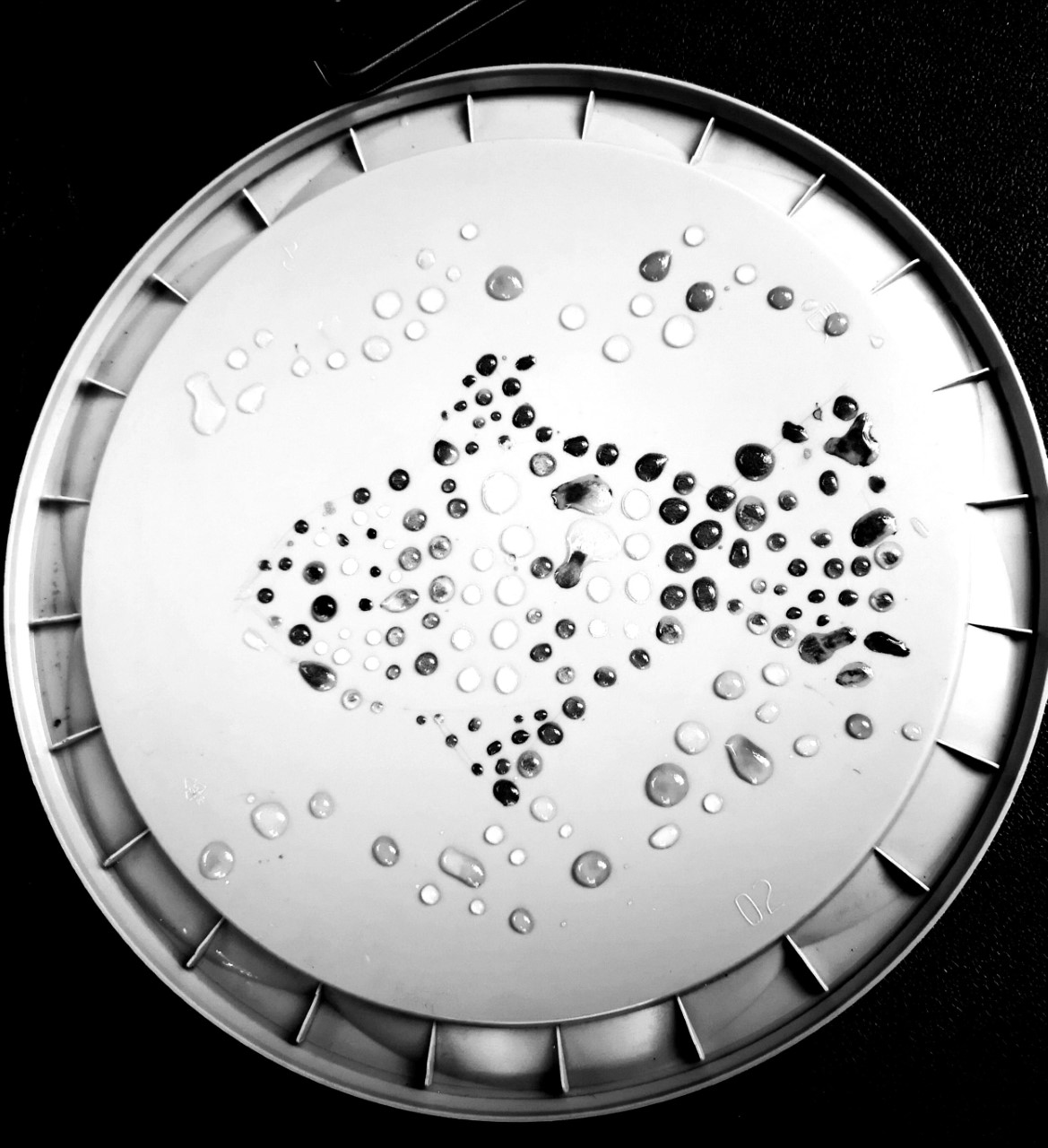
I have been looking at an artist called Polina Bright (great name for an artist), who creates incredible art with water droplets.
I have attached two videos of her work, and a insight to how she creates it. She does use pipettes, brushes and paints to colour her water droplet, but obviously we may not have that equipment - but we can be creative.
1. Click here to see Polina Bright's Droplet Art
2. Click here to see Polina Bright's Methods
Try using straws, or capture your drops on the edge of a small paint brush or small spoon.
There are lots of ways to colour your water (beetroot juice, food colouring,tea, paint or something else you may find at home). Remember , just creating a picture with droplets of pure uncoloured water can create a fantastic effect.
If you make a mistake, just soak up the drop with the corner of a paper towel. Make drops bigger by touching them again with another drop.
BE CREATIVE TODAY !
fWhat can I use as a Base?
Make your art on different backgrounds - remember, you want the drops to remain and not soak away, so find a good material which isn't too porous - black card gives agreat effect BUT you need to be quick to take you picture before the water soaks in. A plate is good, or use a natural background, like wood, or try a tile if you have one.
Be creative and send me your pictures.
These 2 are mine...
Adding a drop of tea gives a nice golden effect....
Here's ORs 'Beetroot Heart'
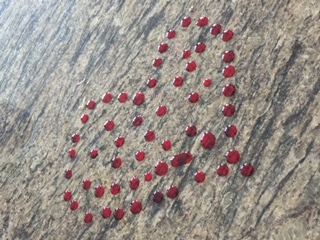
Here's HYs amazing artwork from today:
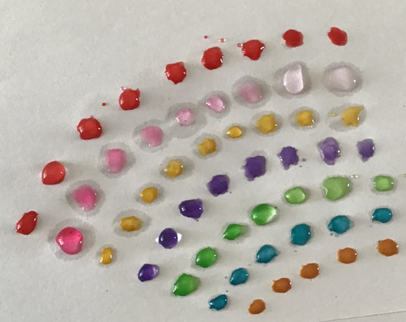
Here's KGs colourful artwork - using a clever greaseproff paper base.
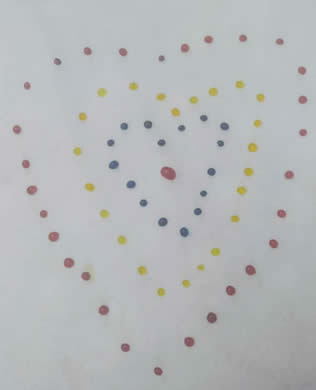
Here's another one of MHg's fish droplets - wow
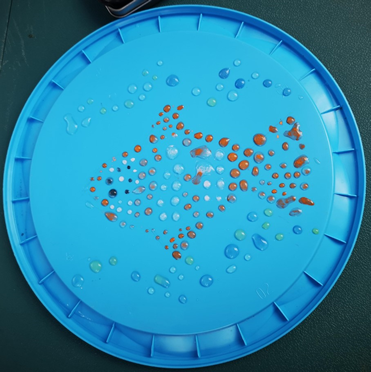
Monday 18th May:

P.E. - The School Games Virtual Challenge:
This is the fourth week of the School Games Virtual Challenge. So this afternoon we've got P.E. for our usual Monday afternoon session. in the sunshine ( hopefully).
This week it's Tri -Golf !
Just go back to the #C4TOGETHER page and click on the P.E. Wall (I'll also put at link in the top right on this page). You'll find your virtual challenge instruction there.
Please, please plaese send a photo or message to the School Games to let them know Wreningham are taking part in this..

